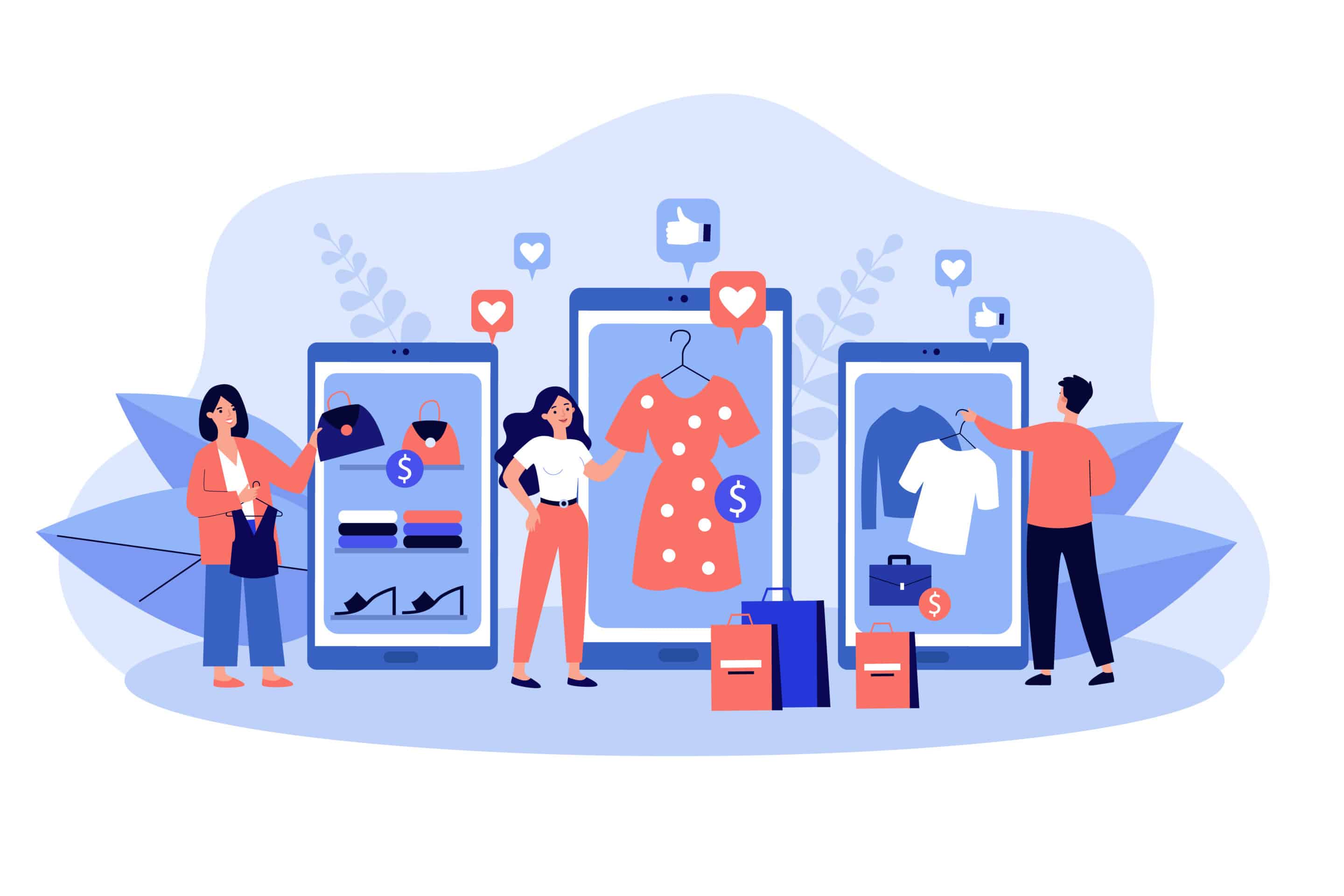The Power of Personalisation in Marketing
Published: 27th May 2024
Leveraging Personalisation in Marketing: Enhancing Customer Engagement in the Digital Marketing Landscape
The power of personalisation in marketing cannot be underestimated. In today’s digital age, customers are constantly bombarded with generic advertisements that have little relevance to their individual needs and preferences. However, by using personalised marketing strategies, businesses can create a more engaging and meaningful experience for their customers.
One of the key benefits of personalisation is that it allows businesses to deliver targeted messages to specific segments of their audience. By collecting and analysing customer data, businesses can gain insights into their customers’ preferences, purchase history, and browsing behaviour. This information can then be used to create personalised marketing campaigns that are tailored to the individual needs and interests of each customer.
For example, a clothing retailer can send targeted emails to customers based on their previous purchases, suggesting similar items or offering exclusive discounts. This level of personalisation not only increases the likelihood of a customer making a purchase but also fosters a sense of loyalty and connection to the brand.

In today’s digital age, personalisation has become a key factor in successful marketing campaigns. Customers crave a sense of connection and individual attention, and incorporating personalisation into your marketing strategy can help you deliver just that. Spotify Wrapped, an annual feature by the popular music streaming platform, serves as a prime example of how personalisation can captivate and engage audiences on a massive scale. Since its inception in 2016, Spotify Wrapped has grown into a cultural phenomenon, eagerly anticipated by music lovers worldwide.
In 2022, the impact of Spotify Wrapped was truly staggering, with an estimated 425 million tweets generated within the first three days of its release. This impressive statistic highlights the power of personalisation in capturing attention and generating excitement among users. By providing each individual with a personalised summary of their listening habits, Spotify Wrapped creates a unique and highly shareable experience, prompting users to express their joy, surprise, and nostalgia through social media. This phenomenon demonstrates the potential of personalisation to not only engage customers but also generate organic buzz and word-of-mouth marketing. So, how can you incorporate personalisation into your own marketing campaigns?
Use segmentation
Segmentation is a crucial strategy for effectively targeting and engaging with your customers. By dividing your customer base into distinct groups, you can tailor your marketing efforts to match their specific needs and preferences. One method of segmentation is demographic segmentation, which involves categorising customers based on factors such as age, gender, income, and location. This approach allows businesses to customise their messaging and offerings to better resonate with each segment’s unique characteristics.
Another effective segmentation technique is psychographic segmentation, which involves grouping customers based on their interests, values, attitudes, and lifestyle choices. This approach goes beyond mere demographics and delves into the deeper motivations and behaviours of individuals. By understanding the psychographic profiles of your customers, you can create targeted marketing campaigns that appeal to their specific desires and aspirations. To successfully implement segmentation, it is important to gather as much data as possible about your customers.
This can be achieved through various methods, such as conducting surveys, analysing purchase history, or tracking website and social media interactions. The more data you have, the clearer the picture you can paint of your customer segments. This allows you to develop more personalised marketing strategies and deliver relevant content that resonates with each group.

Develop various customer personas.
Developing customer personas is a crucial step in understanding your target audience. By leveraging your customer data, you can create a range of personas that represent different segments of your customer base. These personas go beyond basic demographics and delve into the motivations, preferences, and behaviours of your customers.
For instance, let’s consider a fictional company that sells outdoor adventure gear. Through their data analysis, they may identify two distinct customer personas: the “Adventure Enthusiast” and the “Nature Novice.” The adventure enthusiast is an experienced outdoor enthusiast who seeks high-performance gear for challenging expeditions. They are driven by a sense of adventure, value durability and functionality, and are willing to invest in top-of-the-line equipment.
On the other hand, the Nature Novice is someone who is new to outdoor activities and is looking for beginner-friendly gear that provides comfort and ease of use. They are motivated by a desire to explore nature, prioritize affordability, and seek guidance and recommendations from experts. By creating these personas, the company can tailor their marketing efforts and product offerings to effectively resonate with each segment. The adventure enthusiast persona may be targeted with advanced gear promotions, inspiring content showcasing extreme outdoor adventures, and engaging with influencers in the space.
Meanwhile, the Nature Novice persona may receive beginner’s guides, tips for safe and enjoyable nature exploration, and budget-friendly gear recommendations. Expanding on customer personas allows businesses to personalise their messaging and experiences, ultimately improving customer satisfaction and loyalty. It enables companies to understand the unique needs and pain points of their customers and offer tailored solutions that address them.
Additionally, personas help identify new opportunities for growth by uncovering untapped markets or identifying gaps in existing products or services. By continuously updating and refining these personas based on customer feedback and data analysis, businesses can stay in tune with evolving customer needs and preferences, ensuring their strategies remain relevant and effective.
Consider each buyer’s journey stage.
In order to effectively engage and convert potential customers, it is crucial to have content that caters to each stage of the buyer’s journey. The buyer journey consists of several distinct stages, starting from awareness, where potential customers become aware of their problem or need, to consideration, where they evaluate different solutions, and finally to the decision stage, where they make a purchase decision.
By understanding and addressing the specific needs and concerns at each stage, you can guide your customers towards making a purchase with your brand. To begin with, in the awareness stage, it is important to create content that captures the attention of your target audience. This can be achieved through informative blog posts, engaging social media content, and educational videos. By providing valuable information and insights related to their problems or needs, you can position your brand as a trusted source of information and build initial awareness.
Moving on to the consideration stage, it is crucial to provide content that compares and showcases the benefits of your solution or product. This can include case studies, product demos, and customer testimonials. By highlighting the unique value proposition of your brand and addressing any concerns or objections, you can help potential customers explore and evaluate your offerings.
Finally, in the decision stage, it is important to provide content that reinforces trust and encourages the final purchase. This can be done through limited-time offers, discounts, and personalised messages. By creating a sense of urgency and emphasising the positive outcomes of choosing your brand, you can nudge potential customers towards making a purchase decision. In conclusion, by strategically planning and scheduling content that aligns with each stage of the buyer’s journey, you can effectively engage and convert potential customers.
By addressing their specific needs and concerns at each stage, you can guide them towards making a purchase decision with your brand. Remember, understanding your buyer’s steps and consistently delivering valuable content will help you build strong relationships and drive business growth. So, take the time to research and invest in creating content that caters to each stage of the buyer’s journey.
Conclusion
In conclusion, personalisation has become a crucial aspect of successful marketing in today’s digital world. By leveraging customer data and tailoring their messages, businesses can create a more engaging and relevant experience for their customers. This not only helps to build stronger relationships with customers but also increases the effectiveness of marketing efforts.
As technology continues to advance, the power of personalisation will only become more important for businesses looking to stand out in a crowded market. So if you want to stay ahead of the game, it’s time to start incorporating personalisation into your marketing strategy. Your customers will thank you for it.







Email [email protected]
Phone 01392 908804
Office Hours
9am - 5pm Mon-Fri
Office Address
Falcon Digital, Office 6, 6 St Paul's Road, Newton Abbot, Devon, TQ12 2HP
Other Services
Company Registration no:
13682575
VAT Registration Number:
GB 437 7229 74

